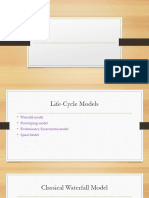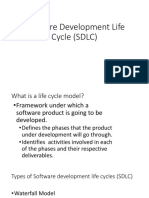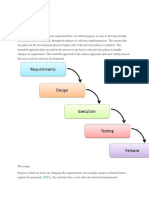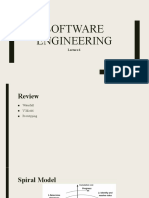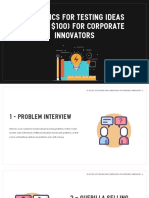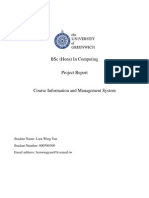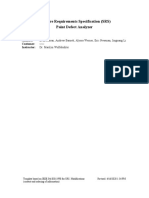0% found this document useful (0 votes)
30 views14 pagesSoftware Life Cycle Models - Notes
The document outlines various software life cycle models, including the Waterfall, Spiral, Prototype, Agile, and Evolutionary Process Models, detailing their phases, advantages, and disadvantages. It emphasizes the importance of requirements analysis and specification, highlighting methods for requirements elicitation and the significance of understanding customer needs. Each model is suited for different project types and complexities, with specific scenarios where they are most effective.
Uploaded by
amit.mishra15112001Copyright
© © All Rights Reserved
We take content rights seriously. If you suspect this is your content, claim it here.
Available Formats
Download as DOCX, PDF, TXT or read online on Scribd
0% found this document useful (0 votes)
30 views14 pagesSoftware Life Cycle Models - Notes
The document outlines various software life cycle models, including the Waterfall, Spiral, Prototype, Agile, and Evolutionary Process Models, detailing their phases, advantages, and disadvantages. It emphasizes the importance of requirements analysis and specification, highlighting methods for requirements elicitation and the significance of understanding customer needs. Each model is suited for different project types and complexities, with specific scenarios where they are most effective.
Uploaded by
amit.mishra15112001Copyright
© © All Rights Reserved
We take content rights seriously. If you suspect this is your content, claim it here.
Available Formats
Download as DOCX, PDF, TXT or read online on Scribd
/ 14











